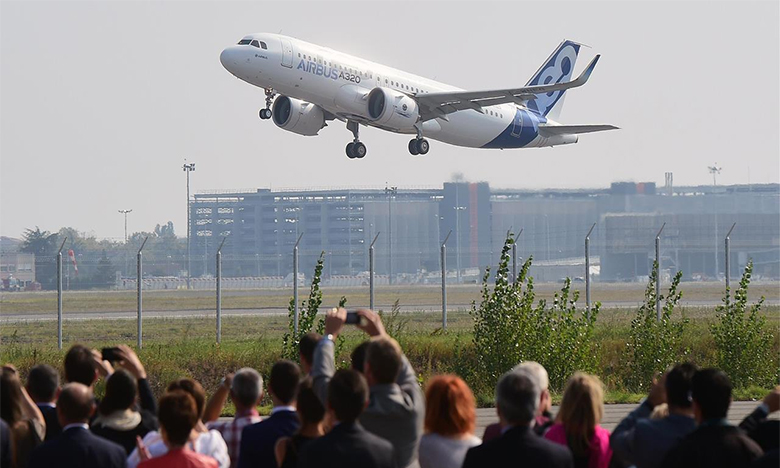Hey, beleaguered air travelers, ready for some good news? How does this sound? Fly on TAP Portugal Airlines nonstop from Providence, Rhode Island, to Porto in the heart of the Iberian Peninsula’s answer to Napa Valley. Or how about Hartford, Connecticut, to Edinburgh, Scotland, nonstop on Norwegian Airlines? Or would you prefer to jet straight from Islip, New York, to Shannon, Ireland, via that ultimate budget-travel provocateur, Ryanair? The kicker: Some one-way tickets might cost as little as $65.
These are not fantasy flights; Norwegian is on the verge of launching that unlikely route between New England and the Old World this month. But it’s only recently that these oddball city pairings have even been possible. What’s behind the trend? New incarnations of narrow-body jets — the Boeing 737 Max and the Airbus A320 Neo — are now rolling off assembly lines at Boeing’s Seattle plant and at factories owned by Airbus Industrie in Toulouse, France.
These are not just souped-up versions of the sturdy workhorses that carry the bulk of today’s domestic passengers. They’re different beasts entirely, capable of covering far longer distances, landing at smaller airports and carrying more passengers than a typical single-aisle plane. While they don’t ooze glamour like the Boeing 747 or the defunct supersonic Concorde, these agile airframes could have as great an impact on international air travel as those iconic jetliners had in the 1970s.
The secret sauce? Powerful new engines that will carry these birds across big oceans for far less money per passenger. The revolutionary Geared Turbofan from Pratt & Whitney is the driving force behind the early success of the A320 Neo, with reported fuel savings of 17 percent on a six-hour flight versus the older iteration of the same plane. Boeing makes similar claims for its 737 Max, saying that if all older narrow bodies were replaced with their advanced siblings, it would have the same impact on the environment as removing 4.5 million cars from the road. Since fuel is one of an airline’s biggest expenses, that goosed-up economy alone justifies the Max’s price tag of around $100 million.
“This turns a route that might not have made sense before into a reality,” says Peter Ingram, chief commercial officer of Hawaiian Airlines, whose company has bought 18 A321 Neos, the larger version of this advanced plane. It will carry 189 passengers in two classes of service about 4,000 miles nonstop, making routes like Honolulu to Portland economically feasible, although Hawaiian is mum about where it will fly the new plane.
Until now, the conventional wisdom was that only a wide-body jetliner like the Boeing 767 or the Airbus A330 made sense on nonstop flights of more than seven or eight hours fully loaded. And that’s still true for the ultra-long-haul runs like New York to Singapore. But not every long-distance route has the demand to support a jet with 300-plus passengers. Swap the behemoths for smaller, more fuel-efficient planes, though, and the number of possible routes explodes.
“It changes the economics dramatically,” says founder and former CEO David Neeleman, who is now a major investor in TAP. “It lets us fly a lot more frequencies to a lot more places.” The key, he adds, is the vast improvement in engine output. For its order of Airbus A320s, TAP is using the GE Leap engine, which delivers a big boost to the bottom line. “It didn’t happen overnight,” Neeleman adds. “It took the shock of high fuel prices to push the industry” to develop these super-efficient engines, starting about 10 years ago.
Of course, rebel airlines have been trying to crack the budget travel code since the days of Sir Freddie Laker, the mid-’70s pioneer of cheap transatlantic flying. Most of those early budget fleets started out with old, inefficient planes, which were cheap in the short-term but a money drain in the long run. “It’s not just the price of the plane that counts,” says Hawaiian’s Ingram. “It’s all the money it costs to maintain the plane and keep it in the air.” A new generation of cheap-flight mavericks is betting that the advanced technology in new planes will erase that disadvantage. “For the right fare, people will fly inside a barrel of toxic waste to get to Europe,” says Henry Harteveldt, travel and transportation analyst at Atmosphere Research in San Francisco.
Not everyone welcomes the small-is-beautiful trend. Taking a cramped flight out of a dinky airport isn’t exactly the send-off most travelers expect when jetting to Europe. Among other things, Norwegian’s 737s, which hold about 190 people, are all coach class. Passengers have to pay extra for bags and seat assignments, while food — what little there is — needs to be arranged in advance.
Still, there may be no stopping the likes of Norwegian or Ryanair. In 2019, Airbus will debut the longest range version of the A321, which will be able to carry around 220 passengers and bring the Eastern seaboard of the U.S. within a nonstop flight of most of Europe. Aviation insiders took notice when JetBlue placed an order for this new model, saying “it will give us transatlantic range.”
So, is it goodbye to cocktail lounges and sleeper seats and hello to brown-bagging it on a flying bus? Yes, and gladly, for those who’d rather spend their money in a Porto wine bar than leave it in the airlines’ pockets. For those travelers, squeeze in, buckle up and bon voyage!

